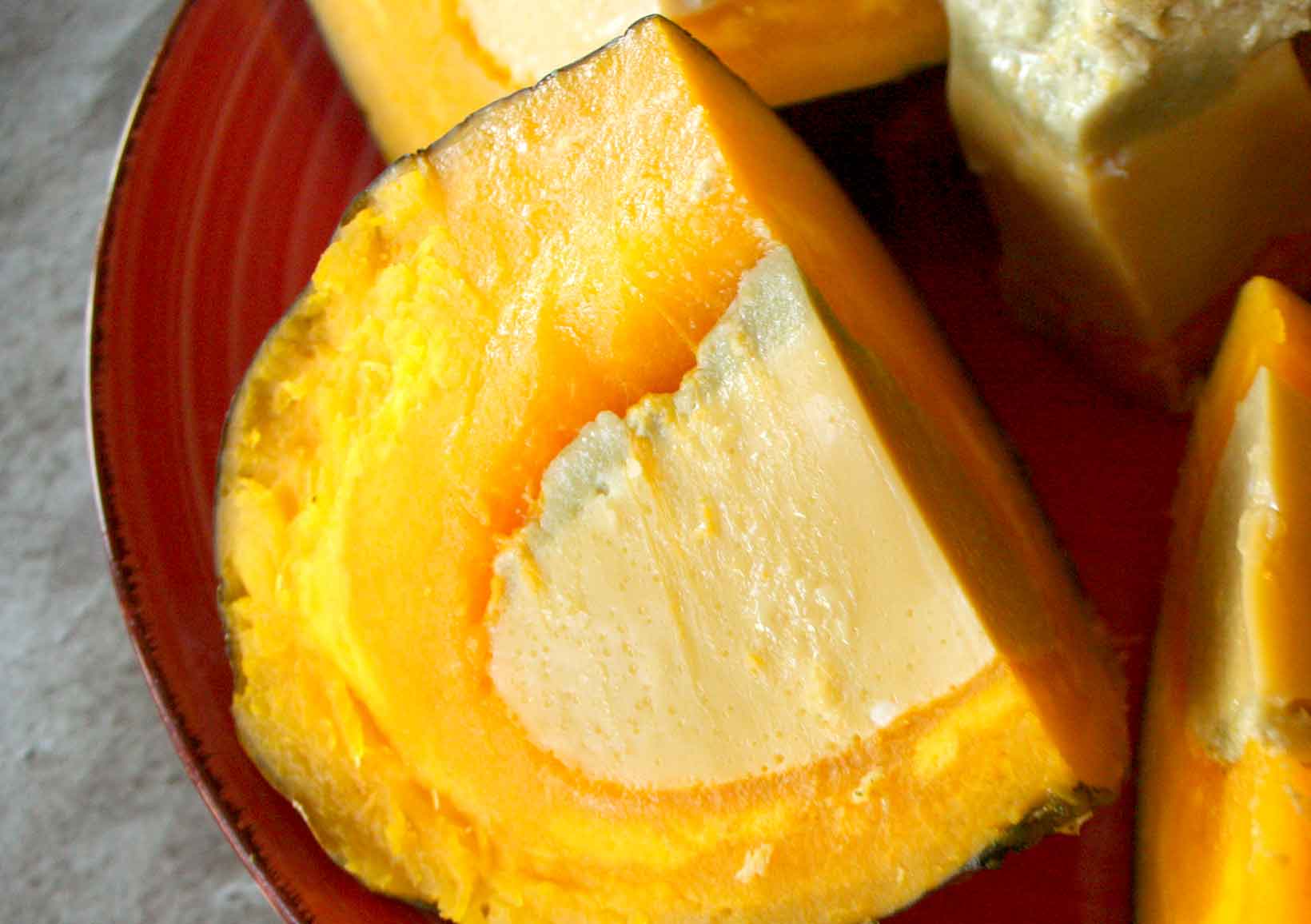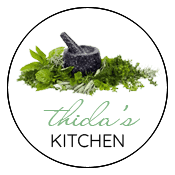Cambodian desserts blend local ingredients and traditional preparation methods that reflect the heart of Khmer cuisine. Cambodian desserts are often characterized by their sweetness, delicate textures, and the frequent use of tropical fruits, coconut milk, and palm sugar.

In Cambodian cuisine, desserts serve as a way to end a meal and as a treat to be enjoyed throughout the day. Cambodian desserts have simple yet flavorful combinations that showcase the versatility of local ingredients, such as coconut milk, rice, rice flour, banana (and banana leaves), pandan extract, and tapioca pearls — to name a few. These key ingredients for the basis of the four primary groups of Khmer desserts: rice-based treats, fruit-based desserts, puddings, and custards. Of the numerous sweets found in Cambodian cuisine, num ansom (rolled glutinous rice cake) is the most popular in the Kingdom of Wonder.
Steaming and grilling are the prevalent cooking methods used to prepare desserts in Cambodia. However, deep-frying is another common approach, particularly to making pastries, as baking is not too widespread in Cambodia outside of commercial bakeries.
Our guide to Cambodian desserts walks you through the four distinct categories of Khmer sweets, with some notable examples (and links to recipes we have on our site). We’re always adding dessert recipes to our collection, so expect this guide to grow with time!
Types of Cambodian desserts
Cambodian desserts can be broadly categorized into the four following groups.
- Rice-based desserts
- Fruit-based desserts
- Puddings
- Custards
Below, we explore the four aforementioned groups of desserts and their place in Cambodian cuisine.
Rice-based Cambodian desserts
Rice forms the base of various Cambodian desserts; glutinous rice and rice flour are notably popular ingredients. Below are three examples of rice-based Khmer treats.
- Nom ansom chek: Num ansom chek is a popular treat featuring a banana rolled in glutinous rice and wrapped in banana leaves.
- Sticky rice balls: The Khmer sticky rice ball is made from glutinous rice flour and filled with sweet coconut, palm sugar, or mung bean paste.
- Nom chak chol: Nom chak chol is a crispy, chewy deep-fried rice flour pancake that’s commonly sold at street food stalls.
Fruit-based Cambodian desserts
Tropical fruits such as mango, jackfruit, papaya, and guava are used in various Cambodian desserts for their sweet, fragrant aroma. These fruits are often combined with pandan leaf extract, banana leaves, coconut milk, cream, or shavings to create distinctly tropical — yet very light — confections. Mango and sticky coconut rice is a quintessential Khmer dessert recipe that harnesses the sweet, breathtaking aromas of ripe mangos and coconut.
No selection of fruit-based desserts is complete without jams. And although jams are not a traditional Cambodian treat, there are plenty of homemade jam varieties throughout the Kingdom, especially in establishments that cater to tourists. We’ve recreated one of these jams on our site — you can check out our mango passionfruit jam recipe here.
Cambodian puddings
Cambodian puddings are largely made with coconut milk (or cream) and tapioca pearls. These puddings may be served hot or chilled, with ice cubes (as is common in my village). Below are two common (and very similar) variations of Khmer coconut-based puddings.
- Banana pudding: Cambodian banana pudding is made using bananas, coconut milk, tapioca pearls, and pandan leaves. The trifecta of coconut milk, bananas, and pandan infuse this dessert with a classic tropical aroma.
- Corn pudding: The Cambodian corn pudding capitalizes on the natural sweetness of corn, while its coconut cream base adds a distinct tropical fragrance. The tapioca pearls give the pudding a gelatinous texture.
- Mung bean pudding: Swap corn for mung bean, and you’ve got another popular Khmer pudding. Unlike its corn-based cousin, the mung bean pudding’s sweetness is less overpowering, and the texture is more viscous.
Cambodian custards
Cambodian custards are generally steamed, with a process that’s often elaborate and laborious. Given the time and effort required to produce this type of dessert (compared to, say, mangoes and sticky rice), Cambodians usually reserve custard dishes for special occasions and large family gatherings. Below are two of Cambodia’s common custard desserts.
- Sankhya lapov: Sankhya Lapov is a custard that’s steamed inside a buttercup squash. This traditional Cambodian dessert is made by filling a small buttercup squash (or pumpkin) with a custard comprising eggs, coconut milk, palm sugar, salt, and pandan extract. The creamy texture of the steamed custard complements the custard’s firm consistency.
- Num chak kachan: Num chak kachan is a colorful, steamed Cambodian layer cake. The cake merges the flavors of coconut and pandan extract and has a firm, chewy consistency.
What are the key ingredients in Khmer layer cake?
The key ingredients in Khmer layer cake are rice flour, tapioca starch, coconut milk, sugar, and pandan or butterfly pea flavoring. These common Cambodian ingredients give the cake its vibrant multi-layered appearance, as well as its chewy texture and sweet, coconut-infused taste.
How is the Cambodian tapioca dessert prepared?
The Cambodian tapioca dessert is prepared by following the four steps below.
- Soak the tapioca pearls for 20 minutes
- Set coconut milk to boil in a pot
- Add the tapioca pearls, along with sugar and corn or mung beans to the boiling coconut milk
- Allow the mix to boil until the tapioca pearls become translucent
The steps above may vary if you’re adding other ingredients (such as pandan extract) to the mix. However, the procedure described above comprises the basic steps for preparing the Cambodian tapioca dessert.
What are common flavors in Cambodian jelly desserts?
Coconut and pandan are the two common flavors in Cambodian jelly desserts. Coconut gives the jelly a nutty, sweet flavor. The coconut aroma is usually added to Khmer jelly desserts with the addition of coconut milk or cream. Meanwhile, pandan extract, powder, or simply fresh blended pandan leaves may be used to infuse the jelly with a grassy taste with a hint of vanilla.
What is the most popular dessert in Cambodia?
Num ansom is arguably the most popular dessert in Cambodia. Below are the two versions of the num ansom cake.
- Num ansom chek: Num ansom check is a rolled cake comprising a banana wrapped in sticky rice and banana leaves. This treat is typically steamed. The banana cake is ubiquitous in the nation’s markets, and a favorite during festive events, such as weddings.
- Num ansom chrouk: Num ansom chrouk is similar to the rolled banana cake, except the filling contains pork belly. The num ansom chrouk is more commonly served at major holidays, such as Pchum Ben and Khmer New Year.
